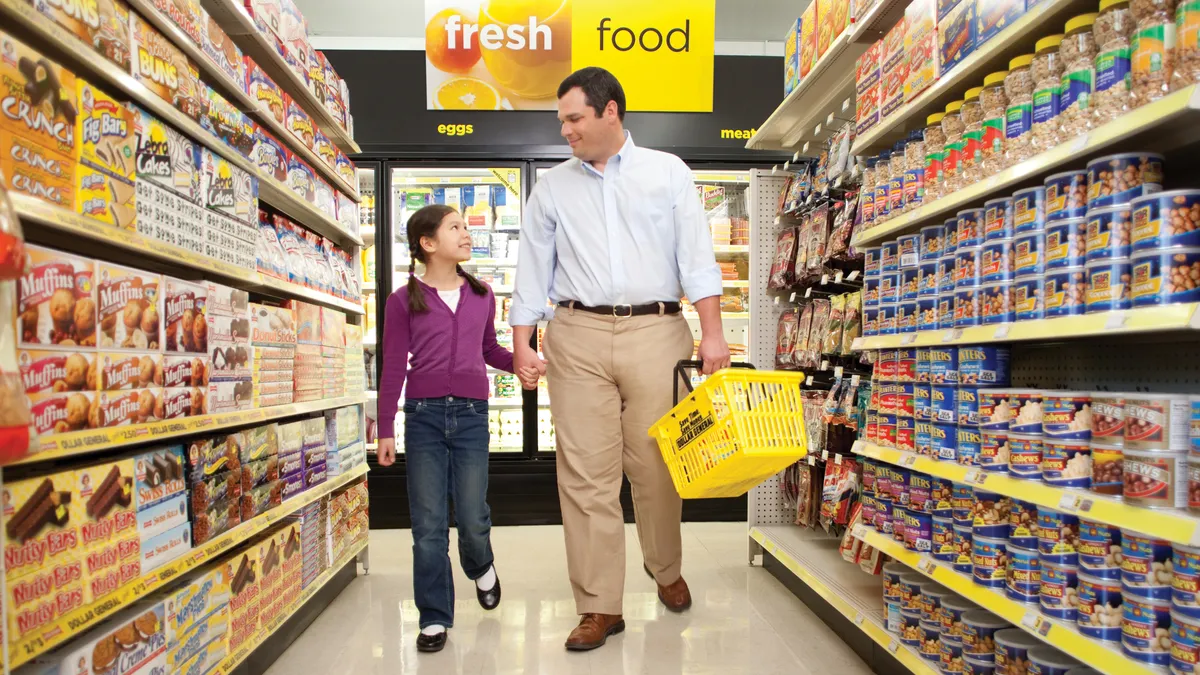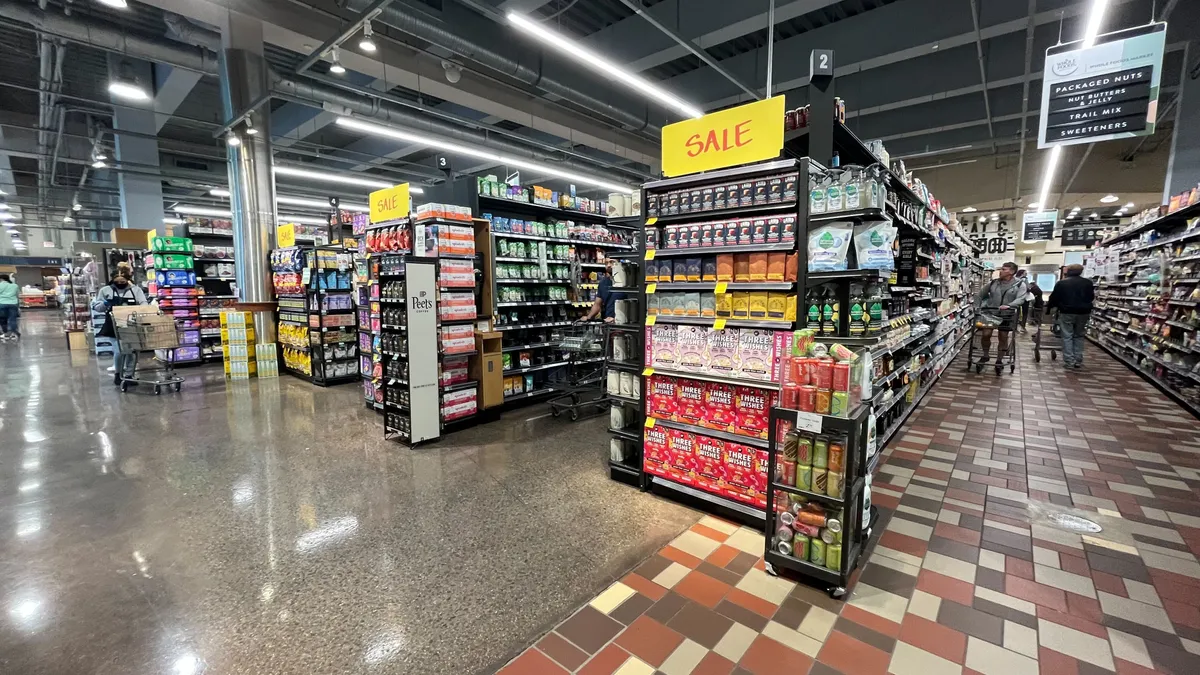Dive Brief:
- Eighty-four percent of male respondents in a recent Men’s Health poll said they are the primary grocery shopper in their household, according to The Shelby Report. That’s a 19% increase over the past decade.
- The survey also found that 66% of male shoppers figure out what they want to buy before entering the store, and 35% are influenced by online ads in deciding what they’re going to purchase.
- Seventy percent of respondents said they’re the primary shopper for large trips — defined as those with 16 items or more. Forty-three percent say they’re making those stock-up trips by themselves.
Dive Insight:
While the Men’s Health survey shows men taking the lead role as grocery shoppers, other reports show an even split between the genders. Market research firm VideoMining found that women do 51% of the grocery shopping while men do 49%. The Hartman Group, meanwhile, found that men do around 43% of the shopping.
Regardless of how the numbers break down, it’s clear that evolving gender roles have had a significant impact on not just who does the grocery shopping in U.S. households, but how consumers shop at their local supermarkets.
Research shows that men and women approach grocery shopping in very different ways. According to The Hartman Group, female shoppers are more likely to browse the aisles, while male shoppers tend to take a “search and retrieve” approach to pick up predetermined items. The Men’s Health survey echoes this finding, with two-thirds of respondents saying they figure out what they’re going to buy before they enter the store.
So what are men putting in their baskets? Research shows that men are top buyers of meat and alcohol, and are buying produce, snacks and household items in increasing quantities. Men also often value convenience more highly than women, and tend to spend less time overall in stores. However, research firm Packaged Facts reports that men are building larger baskets and spending more per item than in years past.
Supermarkets may find it tricky to appeal to the very different — and sometimes contradictory — shopping habits of men and women. But there are some clear steps retailers can take to capitalize on the distinctions. Since men like to determine what they’re going to buy before shopping, online and print ads may resonate more with them. Female shoppers, on the other hand, may be more receptive to in-store marketing efforts that capitalize on their tendency to browse.
Male shoppers’ focus on convenience, meanwhile, means grocers should consider putting beer, fresh meat and other popular products in easy-to-reach places near the front of the store.
At the same time, retailers shouldn’t become too rigid in their approach here. Men do value convenience and a quicker shopping trip, but they’re also cooking more and eager to improve their skills in the kitchen. The Men’s Health survey shows 93% are preparing meals for themselves and 77% are preparing meals for others, while nearly half say they’ve viewed cooking videos in the past year. In-store demos, recipe cards and cooking classes targeted to male shoppers wouldn’t be a stretch, and could increase store loyalty among an increasingly important consumer segment.










